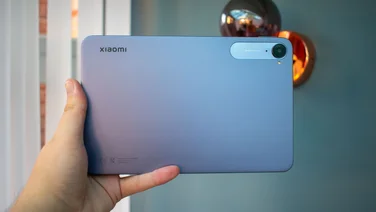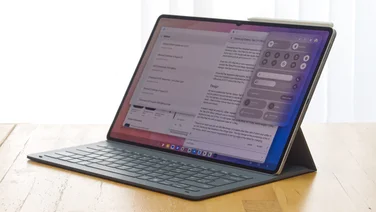To help us provide you with free impartial advice, we may earn a commission if you buy through links on our site. Learn more









- Beautiful sharp E Ink screen
- Adding notes to your Kindle books is a game changer
- Bundled pen writes beautifully
- A bit big to be your main ebook reader
- Handwriting-to-text conversion needs work
- Document syncing is clunky
The Kindle Scribe is, as Amazon puts it in its product listing, “the first Kindle for reading and writing”. Let’s ignore that awkward stage cough from the first three generations of Kindle, which included a built-in keyboard, and focus on the Kindle Scribe, which bundles a Pen for scribbling on its bigger-than-ever screen.
Yes, Amazon is going after the digital notepad niche popularised by ReMarkable and Onyx. But does it bring anything new to the table and is the inclusion of the mammoth Kindle book store enough to raise it above the smaller brands that made it to market first?
READ NEXT: Our guide to the best Kindle to buy right now
Amazon Kindle Scribe review: What you need to know
The name “Kindle Scribe” neatly represents the two halves of the product. The Kindle part is what Amazon has over a decade of experience with. It’s an ebook reader with access to an enormous proprietary library of competitively priced books available to download in seconds.
It’s the largest Kindle yet with a 10.2in E Ink screen making even the 7in Kindle Oasis look dinky, and it maintains a pixel density of 300ppi for crisp, clear text. Like the most recent Kindle Paperwhite, the Kindle Scribe charges via USB-C, and it’s available in 16GB, 32GB and 64GB sizes.
The last of these is a first for the Kindle range but is worth introducing thanks to the Scribe part of the name. Now, you won’t just be consuming e-books and audiobooks but creating your own content via the included Pen. You can use this to write whatever you like in digital notebooks or even to annotate PDF files and e-books bought from Amazon.
You would think this would be the most premium e-reader around, and it mostly is, but it’s important to note that the Scribe does not offer wireless charging, IPX8 waterproofing or free mobile connectivity, all features other products in the Kindle range do offer. None are deal breakers but it’s still disappointing for the priciest member of the Kindle family not to include them.
Amazon Kindle Scribe review: Price and competition
Pricing is a little bit messy, not just thanks to the three storage options, but also because you can buy the Kindle Scribe with either the Basic Pen or the Premium Pen. The latter is the same size and shape as the basic pen but includes an eraser on the end, saving you having to use the UI to switch tools, and also has a Shortcut button.
The cheapest option is £330 for the 16GB Scribe with the Basic Pen, and this rises to £410 for the 64GB model with the Premium Pen. Upgrading to the Premium pen alone will cost you an extra £30.
That makes it the most expensive Kindle by some distance – the basic Kindle will set you back £85, the Kindle Paperwhite is £105 and the Kindle Oasis costs £195 – although there is some justification for this. No other Kindle lets you write on the screen, nor are any this large.
In terms of paper-like devices for doodling on, there are three alternatives to consider: the ReMarkable 2, which sells for £339; the Onyx Boox Note Air 2 at £470 and Huawei’s MatePad Paper at £420. We haven’t reviewed the Onyx Boox but were impressed with reMarkable 2 and less than bowled over by Huawei’s offering. None of these holds the Kindle Scribe’s trump card, however: access to the Kindle ebook store.
Finally, it would be remiss to mention that a bunch of recent tablets have their own stylus for similar functionality, namely Apple Pencil-compatible iPads and the Samsung Galaxy Tab S8 family. There are pros and cons to these. They have beautiful bright screens and access to millions of apps but you’re drawing on smooth glass, which is nowhere near as pleasant as the paper-like feel provided by the matte-finish displays on these E Ink devices.
As a rule of thumb, tablets with pens are better if you want to sketch, draw and paint as well as just write, while E Ink writing devices are best for those who take copious notes and don’t mind spending a premium for digital copies of their output.

Amazon Kindle Scribe review: Design
If you’ve ever found yourself thinking that Amazon’s Kindles are just too darned small, then the Kindle Scribe is the e-reader for you.
The 10.2in screen in itself would take up a whole lot of space but add in a centimetre’s worth of bezel on three sides, plus a larger bezel on one for grip, and it comes in at a massive 196 x 230 x 5.8mm. Considering this, its 433g weight feels impossibly light, even if it’s not the lightweight one-handed read that Kindles have historically been.
Bearing that in mind, the wider bezel is a good idea. It lets you grip the e-reader without accidentally turning pages before you’re ready and Amazon has had the foresight to make it ambidextrous. Flip the Kindle 180 degrees and the screen spins around as well, ensuring that the wider bezel can be on the left or right. As a result, both right- and left-handed people should be comfortable holding it.

The edge bordering the wider bezel houses both the power button and the USB-C charging port, making it the second Kindle to get the upgrade after this year’s Paperwhite. USB-C is welcome, although you shouldn’t need to charge it too often. All Kindles have battery life that can be measured in weeks rather than hours, and this is the most impressive yet, with Amazon promising a whopping 12 weeks if you read half an hour a day, although this drops to three weeks if you spend the time writing instead of reading.

The Pen (or Premium Pen, which our sample came with) clips magnetically to the opposite side, meaning it’s hard to lose. If you do, however, you can always buy a replacement from Amazon at £28 for the Basic Pen or £48 for the Premium version.
All in all, it’s about as well designed as a giant e-reader can be, with its aluminium frame feeling surprisingly light in the hand. If you want to protect the screen, Amazon offers a flip cover that folds over the top, clipboard style for added peace of mind. It even has a loop for the Pen, should you not trust the (surprisingly grippy) magnets.
READ NEXT: The best ebook readers you buy right now
Amazon Kindle Scribe review: As an e-reader
The UI on the Kindle Scribe is essentially the same as on other Kindles so, if you’ve used one of those devices, you’ll feel right at home while reading. And, like all Kindles, the Scribe offers an excellent reading experience. Despite its larger size, its E-ink display has the same “pixel” density (300dpi) as the other premium Kindles, so the text is every bit as sharp.
It is, undoubtedly, a little less practical, however. While other Kindles are small enough to tuck into pockets, this one will need a more sizable bag, the kind you’d usually need for a tablet or small laptop.
And, while the size of the screen makes seeing a huge amount of text easier, I prefer the smaller paperback-sized Kindles for comfort. It’s hard to imagine pulling out the Scribe on the Tube or even on a long-haul flight. In short, I can’t imagine wanting this to replace my existing Kindle, as it’s a considerably less practical device.

Amazon Kindle Scribe review: As a notepad
If you haven’t used an E Ink note taker before, you’re in for a treat. Open up a new notepad, pick a template (lined paper, graph paper, checklists, etc), start doodling away and you’ll be amazed at how good it feels. And, since the stylus uses the same technology as a Wacom Pen, it never needs charging. It feels slightly magical.
Comparing it directly to reMarkable 2, I was surprised to find very little between the two devices, right down to the fact that each device’s stylus worked on the other, which I wasn’t expecting.
The reMarkable 2 offers more pen-on-paper-like resistance, while the Kindle Scribe feels a bit more like writing with felt tips, but both are miles ahead of using an Apple Pencil on glass. The Kindle Scribe is possibly a tiny bit slower in registering marks on the screen but both essentially feel instant.

Writing on these devices isn’t exactly the same as writing on paper, of course, but the telling thing is that the longer I used the Scribe, the less I cared. In other words, if you use it for long enough, your brain will eventually adapt and you’ll forget that you’re essentially writing on a computer screen. That makes the devices like this brilliant for brainstorming and clarity, without the distractions of dozens of open tabs and apps.
Unfortunately, the Kindle Scribe is not without its quirks. For starters, handwriting recognition to automatically convert your scribbles into text is limited. In fact, the Scribe initially launched with no handwriting recognition at all, and although it has now added the facility via a firmware update, it’s still a bit rubbish.
What you want handwriting recognition to do is to make your handwritten notes searchable so they’re easy to find, either on the device itself, on your laptop or your phone. This is how it works on the ReMarkable 2. Unfortunately, this is not how it works on the Kindle Scribe. Instead, the only option open to you is to convert the whole notebook and send an email, either to yourself or someone else, with a link to download the converted text file.
It’s a shame because the text recognition itself actually works pretty well. I tested it with my own scrawl and that of several colleagues and it recognised even the most spidery handwriting successfully. However, there’s not much point in doing the recognition in the first place if it isn’t being used to index existing notes.
Additionally, the way the email is formatted – with a download link instead of raw text – means you still can’t sync notes to third party notes apps such as Evernote via its “Email notes to” facility. And another frustration is that on the Kindle app for iOS and Android you can only view your notes. There’s no option to edit those files from the app or export them for editing elsewhere.

On the postive side, scribbling on PDF files is excellent and doesn’t suffer from the weird delay that PDF editing does on the reMarkable 2. However, getting your PDF files onto the Kindle Scribe is an ordeal. If you sideload via USB you can’t annotate them; instead, you have to use the Send to Kindle page on the Amazon website, share the file to the Kindle app on your smartphone, or upload using the desktop software or browser extension on your computer.
This works well enough but, if you then want access to your PDF with scribblings, you have to email the PDF back to yourself. Annotations are curiously missing from the version synced to your mobile devices.
On top of that, the way PDFs are organised is messy. Documents sent to the Scribe via this convoluted process are treated as books from the Kindle Store, making your bookshelf look untidy when they really should be in the notebook section. It’s a small thing, but irritating.

All these things could eventually be addressed through software updates and, as you may have already noted, some already have been to a certain degree. Indeed, Amazon has added several features since launch, including the aforementioned text conversion feature, the ability to lassoo your notes and move them around and the ability to reorientate and select text in imported PDF files. All of these are positive signs.
Even if no more updates happen, though, there’s one thing the Kindle Scribe already has over its rivals: you can write notes directly into the Kindle ebooks you’re reading.
Not every book is supported (for example, comics, manga, graphic novels and newspapers), but the majority are and it works quite well if you like to annotate: simply tap a button and scribble on the sticky note. It’ll be displayed on the page and all your notes are available to browse from the navigation bar.
Amazon Kindle Scribe review: Verdict
The Kindle Scribe is a solid start for Amazon but it feels like a first step rather than the finished article. The writing experience itself is good but the added features feel like they’re overloading an OS that wasn’t designed for them and they’re nowhere near as flexible as those offered by its rivals.
Likewise, while its design is impressive, some will simply find it too large to be their primary e-reader. And as a secondary device, it’s a big ask at £330. And while that’s narrowly cheaper than its key rivals it’s still a huge expense for something that sometimes feels like a promising prototype rather than the final product.
Amazon could have something special here in a few years, or even months if the promised updates materialise. For now, though, it’s a bit too pricey to actively recommend to all but the most avid of early adopters.







